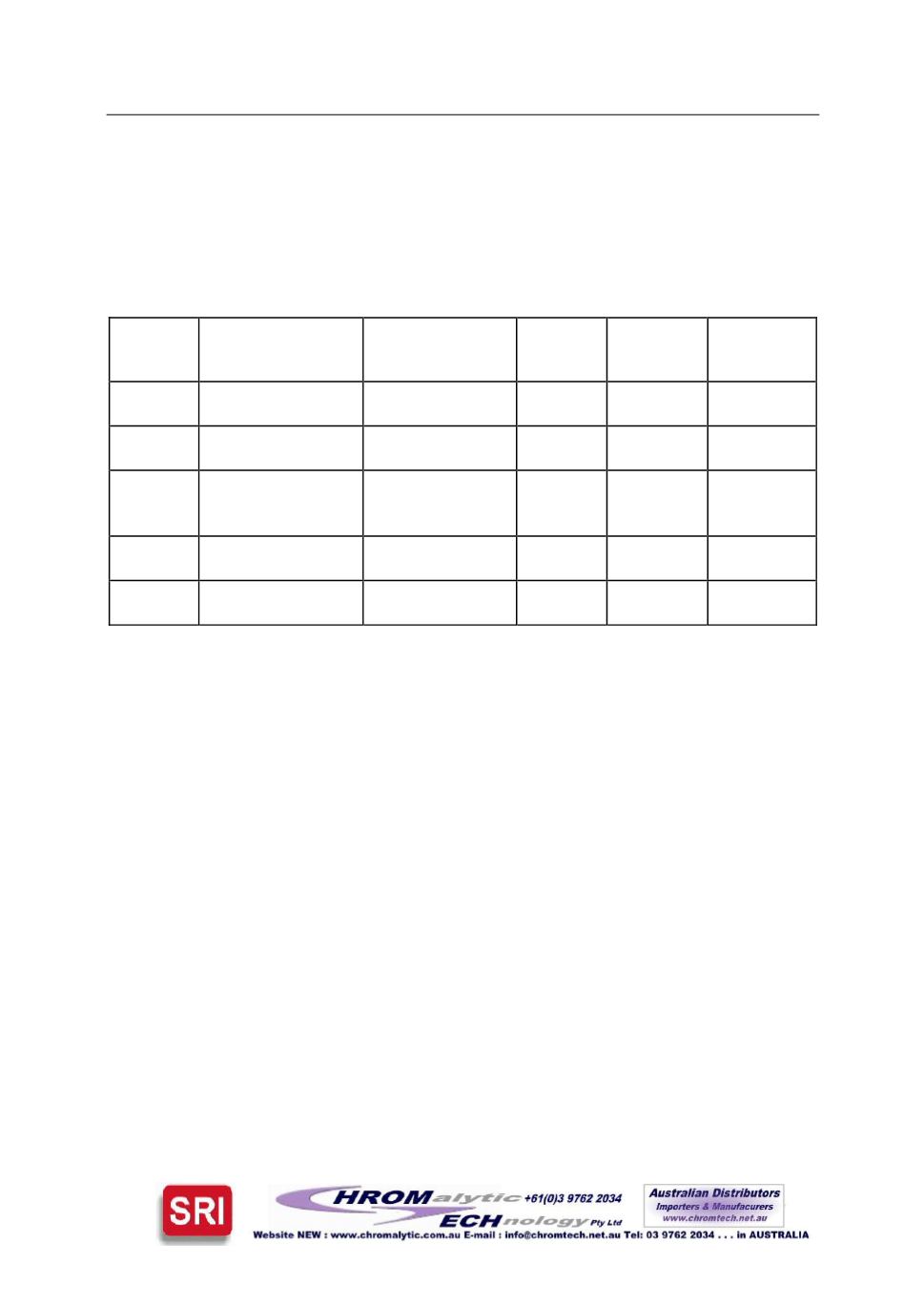
StationaryPhases
37
etc. These compounds are separated on stationary phases of intermediate polarity or
non-polar.
-
Class V
non-polar compounds: alkanes, cycloalkanes. These compounds separate in
non-polar stationaryphases.
This classification is empirical and is only meant to facilitate choosing the most suitable
stationary phase for chromatographic analysis. Many polymers contain mixtures of the
above functional groups, as indicated inTable 4.
Name
Type
Structure
Density
g/ml
Viscosity
cP
Average
Molecular
Weight
OV-1
Dimethysiloxane
gum
CH
3
0,975
> 10
4
OV-101
Dimethylsiloxane
fluid
CH
3
1500
30000
OV-7
Phenylmethyl
dimethyl
Siloxane
80%CH
3
20%C
6
H
5
1.021
500
30000
OV-210
Trifluoropropyl
methylsiloxane
50%CH
2
CH
2
CF
3
50%CH
3
1.284
10.000
200000
OV-275
Dicyanoalkyl
siloxane
20.000
5000
Table 4. Properties of some commercially availablepol-siloxanephases
4. Kovats retention index
A universal approach (Kovats) solved the problems concerning the use, comparison and
characterization of gas chromatography retention data. This reporting of retention data as
retention time t
R
is absolutely meaningless, because all chromatographic parameters and
any experimental fluctuation affect the proper measurement of a retention time. Using
relative retention data (
ǂ
= t'
R2
/t'
R1
) provided improvements, but the default of a universal
standardusable for awide range of temperatures for stationary phases of different polarity
has discouraged its use. In theKovats approach, to retention index I of an alkane is assigned
a value equal to 100 times its number of carbon atoms. Therefore, for example, values I of n-
octane, n-decane and n-dodecanese, are equal to 800, 1000, 1200, respectively, by definition,
and are applicable to any columns, packed or capillary and to any mobile phase,
independent of chromatographic condition, including column temperature. However, for
any component, the chromatographic conditions, such as stationaryphase, its concentration,
support and column temperature for packed columns, must be specified. Since retention
index is the preferredmethod of reporting retention data for capillary columns, stationary
phase, film thickness and column temperaturemust alsobe specified for any component out
of n-alkanes, otherwise I values are meaningless. A value I of a component can be
determined by mixing a mixture of alkanes with the desired component and
chromatography under specified conditions. A plot of the logarithmic adjusted retention
time versus retention index is generated and a retention index of the solute considered is
determinedby extrapolation, as shown in the figurebelow for isoamyl acetate.


